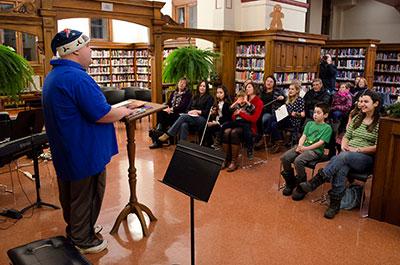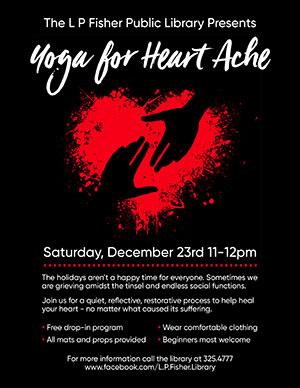At public libraries we spend an awful lot of time celebrating the holidays and happy parts of life (as we should): Halloween parties, Valentine's crafts, Thanksgiving story time, book launches, STEM programs. These are all exciting and essential services. But what about the needs of our patrons that are sometimes a bit messier, a bit more hidden from public view, a bit less Hallmark-card sweet and a bit more nitty-gritty reality?

I know there are libraries out there doing great work in this regard, targeting patrons that are on society's fringes, with earnest survival needs, or disabilities, or mental health issues. We offer programs like that at the L.P. Fisher Public Library too, like a grief support group, or a fundraiser for the local homeless shelter, or a Body Image Bootcamp.
But what I'm talking about here is thinking about the way we approach programming altogether, especially around holidays, in order to include more patrons in our offerings.
A more inclusive approach
We have an annual winter holiday event called Time of Good Cheer. Yes, it is usually a week or two before Christmas (usually near the solstice), and we do put a Christmas tree up, but the program is a hearty mishmash of all sorts of traditions: a recitation of "The Night Before Christmas" by one of our patrons, someone playing the harp, some traditional Hanukkah songs on violin, a few picture books read, the breaking of (literal) bread and sharing of cheese and cider, etc..
The point of the evening is to gather people together, to share our respective talents and interests, to be warmed by one another's light. Isn't this what libraries are all about?
Encouraging reflection
On the flip side, we also offer a program to honor the darkness and pain in one another. On Dec. 23, I teach a class called Yoga for Heart Ache. This past December, we gathered together in the dark, the room lit only by battery-powered tealights in front of each student's mat. We gave each participant two baby poinsettias (acquired by donation from a local nursery). One plant was for them to keep and the other was for them to gift to a person of their choosing, someone they thought might benefit from some beautiful new growth.

As we moved through the gentle yoga poses we were asked to reflect on the things in our lives that were causing us grief. New wounds and old. And to honor them, to sit with them, to give them space among all the splendor, partying and busy-ness of the season.
As the dark days unfolded around us and the sun gradually returned to the skies with the lengthening days ahead, we were reminded that great and powerful things grow out of darkness. That we needed to water the seeds inside of us, to nourish ourselves, and to let our light shine on the world around us.
Holiday celebrations for all
At my library we offer similar sorts of programs at other times of the year: for example, we offer a traditional Valentine's Day program with hearts and cards and gushiness, but we also offer a program for single people, or for people going through loss or heartbreak, or for people who are lonely.
Life and its events don't always correspond with what's happening on the calendar, and it is important for us, as a public service, to be mindful of this and to offer alternatives to people who might be having a very different experience than the culturally sanctioned one. As the poet Kobayashi Issa (1763-1828) wrote in this haiku:
New Year's Day—
everything is in blossom!
I feel about average.
I wish all of you the best in your 2018 programming, and that it may nourish and honor our whole selves. Please feel free to share your interesting alternative holiday program plans in the comments below!



